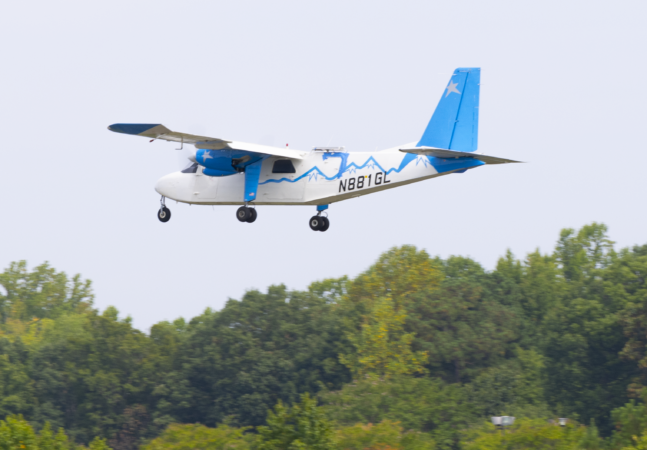Fast Facts
-
Innovative Antenna Design: NASA engineers are creating ultra-lightweight aerogel antennas that can be embedded in aircraft skin, enhancing aerodynamics and communication for drones and air taxis.
-
High-Performance Material: The aerogel, made from flexible polymers, has 95% air content, offering adjustable properties for optimal strength and flexibility, while significantly reducing weight and drag.
-
Successful Testing: Ground tests showed successful communication with both low Earth orbit and geostationary satellites, validating the antenna’s versatility and effectiveness for future air transportation.
- Safety Enhancements for Future Flights: This technology ensures stable communication links, crucial for the safe operation of autonomous vehicles in increasingly crowded airspace, addressing potential safety risks from signal loss.
NASA Tests Ultralight Antennas to Enhance National Airspace
NASA engineers are pushing the boundaries of aviation technology with a new antenna built from one of the world’s lightest materials. This ultralight design could be embedded into aircraft skins, promising a more aerodynamic communication solution for drones and future air transport.
The antenna, made from a flexible aerogel, supports satellite communications even in tight spaces. Aerogel is a unique material, composed mainly of air—about 95% of its structure. This remarkable combination of light weight and strength allows engineers to adapt its properties for various needs, from the flexibility of plastic wrap to the sturdiness of plexiglass.
By layering the aerogel between a circuit board and copper cells, NASA has created what is known as an active phased array aerogel antenna. This innovation significantly reduces drag on aircraft, while providing a lightweight, space-saving, and visually appealing alternative to traditional antennas.
In summer 2024, a rigid version of this antenna will undergo in-flight tests on a Britten-Norman Defender aircraft, in collaboration with the U.S. Navy. Meanwhile, ground testing of a mounted version has already proven successful. Engineers connected with a Eutelsat satellite orbiting over 22,000 miles from the Earth, showcasing the antenna’s capability across diverse satellite systems.
This testing is vital, as aircraft often rely on satellite relays for ground communication. Standard systems can experience delays and loss of signal. However, the aerogel antenna’s precise beam management ensures uninterrupted communication during flight.
As we transition to new modes of transport in U.S. airspace—like autonomous air taxis and delivery drones—reliable communication will be essential. The potential for a "dropped call" in mid-air creates unsafe scenarios. Thus, NASA’s research aims to bolster safety and efficiency in increasingly crowded skies.
The aerogel antenna represents a significant leap in aviation technology, aligning with NASA’s missions to enhance air mobility. Researchers are devoted to minimizing radio frequency interference, ensuring smooth operation for drones, commercial jets, and new flying vehicles. As this technology evolves, it could fundamentally transform our air space, making it safer and more efficient for everyone.
Stay Ahead with the Latest Tech Trends
Stay informed on the revolutionary breakthroughs in Quantum Computing research.
Access comprehensive resources on technology by visiting Wikipedia.
SciV1

